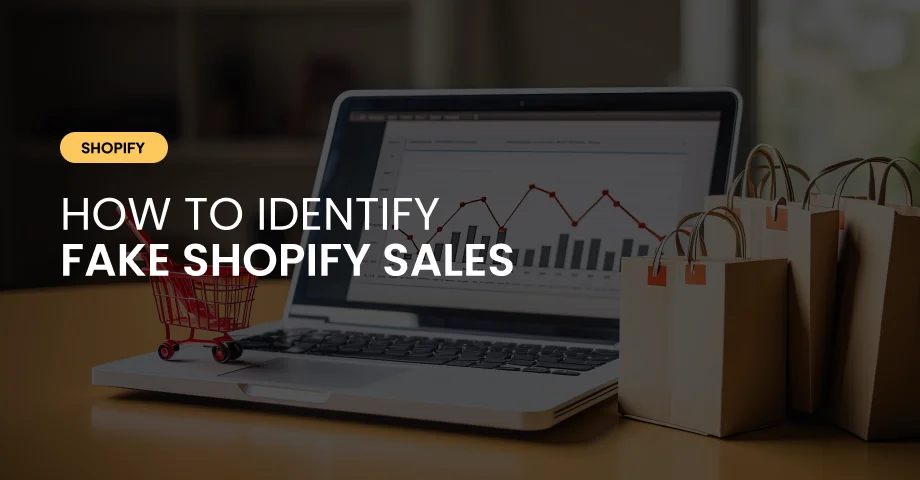
Most Shopify gurus generate fake sales on their Shopify store to just showcase how much they are experts in Shopify and how well they are earning.
They attract entrepreneurs and present their sales statistics to newbies who want to learn how to earn money online.
The most common reasons to showcase fake sales on Shopify are “to sell you something”, “To create a sense of urgency,” or to manipulate social proof
Shopify has emerged as a popular platform for dropshipping aspiring entrepreneurs to kickstart their online businesses, so it becomes necessary to know how to identify fake Shopify sales.
Many people have started their online earning using Shopify and promoted their products without having any physical inventory just because of Shopify.
However, amidst the legitimate success stories, there’s a growing concern about what fake Shopify sales are. These deceptive practices are not only misleading newcomers but also tarnishing the reputation of genuine businesses.
In this article, we’ll delve into what constitutes fake sales and how to discern them from genuine transactions.
It’s crucial to distinguish between original sales and fraudulent practices to protect oneself from scams.
We will also discuss how fake gurus make fake sales stats for videos or advertising like legit sales.
Disclaimer: Be aware if you are a beginner. About 90% of Youtubers are fake Shopify Gurus and are just promoting themselves for views or their services.
What is a Fake Shopify Sale?

Fake Shopify sales refer to a deceptive tactic where someone manipulates a Shopify store’s sales figures within the Shopify dashboard to make it seem more successful than it really is.
This is typically done by the dropshipper, who manipulates Shopify analytics by altering the website’s code (from the inspect element) or using third-party apps to generate phony data. They can also generate fake order within the Shopify Dashboard
The reason behind these fake dropshipping sales is to sell you something, like a course on “getting rich quick” with Shopify or getting promotion or branding for them.
These inflated sales figures may involve fabricated orders, also known as fraudulent orders, that don’t originate from a legitimate customer account.
Sales Figures Attracts Newbies
Fake sales figures scream “success!” which is very attractive to someone new to Shopify who might be looking for a quick and easy way to make money online. They want to learn how to start a business on Shopify from experts, but they do not know how to identify fake Shopify sales.
Most of these high numbers are fake dropshipping sales that create the illusion that anyone can achieve similar results in dropshipping without taking into account the hard work and dedication it actually takes.
Newbies often get trapped because dropshipping is portrayed as a very easy-to-do business model on YouTube and other social media platforms by Shopify affiliates.
These gurus often share their Shopify sales screenshot, mention in their videos the techniques they used to earn millions of dollars and encourage newcomers to either take their coaching classes or click on their affiliate links so that they can earn commissions
The truth becomes apparent when they click on the link or purchase their course, and then they realize that the course lacks the skills or expertise that should develop after taking a course from an expert guru.
As inexperienced buyers do not know how to check Shopify store sales, they are therefore the most affected by this.
Caution: Beware; Shopify Gurus Sell Their Courses by Showing Shopify Fake Sales Pop-ups. They rely on fake sales pop-ups to promote their courses. These pop-ups often display exaggerated sales figures and income claims to lure aspiring entrepreneurs into purchasing their programs.
How to Spot Fake Shopify sales?
Spotting fake Shopify sales can be a challenging task, but there are several indicators you can look for:
Inconsistent Sales Patterns
Transactional analysis can help you identify genuine sales that always tend to follow a consistent pattern over time that reflects market trends and promotional activities. Fake sales, however, may appear sporadic or unusually high compared to other metrics.
Lack of Customer Engagement
Authentic transactions are typically accompanied by genuine customer interactions, such as reviews, inquiries, and feedback. If a Shopify store lacks these organic engagements, it could be a sign of fake sales.
Questionable Social Proof
Social proof can enhance a store’s credibility, but it can also be artificially inflated or fabricated by fake customer accounts to deceive buyers. Anyone can buy fake reviews and testimonials on social profiles because Shopify does not have security checks on social accounts.
However, Shopify has the mechanism to verify reviews against each order placed on the store.
Rapid Growth Trajectory
Beware of Shopify stores that claim rapid or irregular buying patterns without plausible explanations or evidence. Genuine success on Shopify usually requires time, effort, and strategic planning.
Overuse of Sales Pop-ups
Some Shopify stores may employ fake sales pop-ups to create a sense of urgency and persuade customers to make impulsive purchases. Most people get confused about how to identify fake Shopify sales from sales pop-ups.
If these pop-ups appear frequently or seem exaggerated, they could be a red flag for fake sales tactics.
How to Avoid Getting Scammed on Shopify
There is a scam in Shopify often done by fake Shopify gurus, especially newcomers and people who work with Shopify store sales. It’s important to know how to spot a fake Shopify guru because when they are selling a Shopify store to a client, they show high sale figures on a daily basis on the Shopify Dashboard to make the store seem more legitimate and sell it at a higher price.
To understand how to avoid scams on Shopify, it is first essential to know exactly how to identify fake Shopify sales. In the context of Shopify sales and purchases or selling online Shopify courses and services, some individuals may engage in fraudulent activities by generating suspicious orders within their Shopify store.
Let’s see how to fake Shopify sales by generating fake orders within the Shopify dashboard through the following steps:
- Click on “Orders” in the Shopify dashboard.
- In the top right corner, locate the option for “Create Order” and click on it.
- Browse the products you wish to generate orders for. Multiple products can be selected to increase the order value.
- Check the “Payment Due Later” option
- Finally, click on “Create Order.”
Following these steps will create an order, but it will show as “Payment Pending” and the status of the order will be “Unfulfilled.” However, upon refreshing the dashboard, the payment will have been added to your total sales.
But, when the client buys the store and checks its stats, they notice that there have not been any real sales from the store, and they have been scammed.
To avoid getting scammed, you must educate yourself. Take the time to learn how to start a business on Shopify through reputable sources and official documentation.
Equip yourself with the knowledge of how to spot fake Shopify sales dashboards and develop the skills necessary to discern between genuine opportunities and fraudulent schemes.
You can also scrutinize any claims of making a lot of money through the platform before committing to any investments or purchases.
Seek evidence of success that is verifiable and transparent, such as real customer testimonials or independently verified sales data.
Before making any decision, always seek guidance from experienced Shopify affiliates or entrepreneurs who have established successful businesses on the platform.
Their insights and advice can help you navigate the Shopify ecosystem and avoid falling victim to scams.
Final Words: How to Identify Fake Shopify Sales
In conclusion, having knowledge of how to identify fake sales on Shopify is essential for protecting oneself from scams and fake statistics. By understanding the common tactics used by fake Shopify gurus and spotting red flags such as inconsistent sales patterns, lack of customer engagement, and questionable social proof, anyone can make informed decisions and avoid falling victim to deceptive schemes
Happy Learning!





